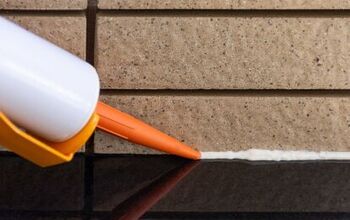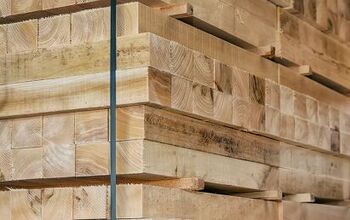What To Look For When You Buy New Plants

Buying new plants from a nursery is exciting, but it also takes a lot of consideration. After all, bringing home an unhealthy plant is like throwing money away. You’re not alone if you want to know what to look for when you buy new plants.
Signs of disease and pests are the most important things to look for when you buy new plants. The last thing you want to do is accidentally infect your other plants with a diseased plant from a nursery. Carefully research the growing conditions, ideal climate, and lifespan of the plant before you buy it.
In many cases, it’s also a bad idea to buy blooming plants, as transplanting them can be harmful. Follow along as we highlight what to look for when you buy new plants.
How To Inspect Plants Before Buying
1. Look For Signs Of Disease
Diseases can quickly spread from one plant to another, especially when they are placed close together. However, this only refers to biotic diseases, which originate from living organisms, such as bacteria, nematodes, and fungi. Abiotic diseases come from environmental problems and poor soil, which can cause nutrient deficiencies.
You must inspect plants for disease before bringing them home, as buying diseased plants can create a headache. First, you must check the leaves for signs of brown and yellow discoloration, which sometimes manifests as small spots. Pay attention to the the condition of the leaves, as you may also find small holes and brittle textures, which can indicate disease.
Mushy, brown roots can also indicate that the plant is diseased. Don’t buy a plant from a nursery if the stems, leaves, or roots look discolored, as it’s not worth the risk. It’s also a good idea to avoid plants near the diseased plants, as diseases can spread quickly in nurseries.
2. Check For Pests
Pests are just as bad for plants as disease is, so you must check for them during your disease inspection. Disease and pest symptoms often manifest in the same way with leaf discoloration. The biggest difference is that the types of holes and marks you may find on the leaves will differ from diseased plants.
Familiarize yourself with what the bite marks of common pests, such as aphids and spider mites, look like. It’s also important to look at pictures of what common pests look like on leaves. For example, spider mites typically appear as small white dots that slowly move when you look closely.
Check the undersides of leaves for webbing, bite marks, and dropping to see if any pests are active. Pest-riddled plants often appear underdeveloped, discolored, and covered in small bite marks. If you can’t tell whether plants are diseased or infested with pests, it’s better to avoid them altogether.
3. Look For Blooms
Transplanting blooming plants may seem like a good idea, but it is often more trouble than it’s worth. They often struggle to grow after being moved during this stage, and you may inadvertently stunt their growth. You can avoid this problem altogether if you avoid blooming plants altogether and buy plants before they reach that stage.
Otherwise, you can cause transplant shock, which takes a while to recover from, if they even recover. It’s better to buy plants before they reach this stage, when the roots are developing. You can encourage healthy growth if you plant flowers while their roots are developing before blooms appear.
Watching the blooms appear days or weeks after buying new plants is quite satisfying if you do it this way. After all, having healthy roots is more important than buying blooming plants.
4. Research The Growing Conditions
You can’t effectively grow a new plant unless you research the ideal growing conditions. This includes everything from what nutrients are best to how much sunlight and water the plant needs. Putting a shade-tolerant plant in full sunlight can stunt its growth and kill it.
Only buy plants that you know you can accommodate with your garden or indoor plant setup. For example, it’s a bad idea to buy a cactus if you live in a cloudy, rainy climate and your backyard is typically shaded. Naturally, you must also read about the ideal growing season for the plant you’re thinking about buying.
The last thing you want to do is buy a new plant and realize it’s too late in the season to plant it. However, that is less of a factor if you plan to keep the plant indoors and mimic the ideal seasonal growing conditions.
5. Consider The Lifespan
Many homeowners and gardeners plant a nice mixture of annuals and perennials each year. However, choosing between annuals and perennials affects more than the current growing season. For example, buying perennials can set you up for an easier growing season next year.
Conversely, annuals won’t come back, so you can only enjoy them for one growing season. That said, perennials only come back if you take great care of them and keep up with their needs. Think about what you want out of your new plants and consider how long you want to enjoy them.
It’s worth planting many annuals, even though they won’t ever come back. Colorful annuals can help you fill the space between your perennials and add character to your garden.
6. See Where It’s From
Plant nurseries often stock plants from all over the country, and some of them even sell exotic plants from other countries. This can be enticing, but there’s a reason why many plants don’t grow in every region. For example, you may struggle to grow black-eyed Susan plants in western states, such as Oregon and California.
Similarly, in many cases, it’s hard to grow certain tropical plants in the Midwest and you can have better luck with native plants than non-native plants in most cases. It helps to go online and find a handful of native plants in your area that look great and fit your aesthetic.
That way, you can enter the plant nursery or garden center with a plan and buy plants you know will thrive locally. This doesn’t mean you can’t buy plants from other climate zones, but you must be quite careful.
7. Ask How It Was Grown
“Organic” has never been a bigger buzzword, and many people think that’s a great thing. Growing plants organically is quite rewarding, especially if you take that route from the start. However, many garden centers and plant nurseries grow plants with artificial fertilizers and chemicals.
This means that they aren’t organic, even if you take them home and go the organic route. The fact that they didn’t start that way may taint your plans of growing plants organically. Don’t hesitate to ask an employee at the garden center about how the plants were grown.
Some people don’t mind buying plants grown with Miracle-Gro, whereas other people consider that a deal-breaker. Others split the difference and buy young plants grown with Miracle-Gro, take them home, and use organic nutrients and fertilizers from there.
How To Tell If A Plant Nursery Is Legit
Some plant nurseries are more reputable than others, so you must do some research. Today, the easiest way to vet a plant nursery is to go online and read some customer reviews. Customer reviews aren’t everything, but they can at least help you get an idea of what to expect.
Reviews with pictures are especially useful when looking into plant nurseries. For example, customers may post pictures of wilted, diseased plants from nurseries. That may reflect on the nursery itself, so it’s worth avoiding the shop if that seems to be a common problem.
It’s also important to check to see if the plant nursery complies with local regulations and certifications. That’s especially true if the nursery buys and sells plants to and from other states, as certifications are typically needed. Trust your gut and only buy plants from nurseries and garden centers that are credible.
Summing It Up
Inspect plants for signs of disease and pest infestations before buying them from nurseries and garden centers. You must also research where the plant is grown to see if it is meant to thrive in your climate zone. Carefully inspect the ideal growing conditions and think about whether or not it’s too late in the growing season for the plant to thrive.
Related Guides:

Nick Durante is a professional writer with a primary focus on home improvement. When he is not writing about home improvement or taking on projects around the house, he likes to read and create art. He is always looking towards the newest trends in home improvement.
More by Nick Durante














![10 Best Scroll Saws for 2022 [Ultimate Reviews & Buyer's Guide]](https://cdn-fastly.upgradedhome.com/media/2023/07/31/9070684/10-best-scroll-saws-for-2022-ultimate-reviews-buyer-s-guide.jpg?size=350x220)












![Cost To Drill A Well [Pricing Per Foot & Cost By State]](https://cdn-fastly.upgradedhome.com/media/2023/07/31/9074980/cost-to-drill-a-well-pricing-per-foot-cost-by-state.jpg?size=350x220)